Forensic Science Today
Epidemiological Study of Road Traffic Accident Cases: A Study from Bengazy-Libya
Neven Ahmed Hassan* and Ashraf Emara
Cite this as
Hassan NA, Emara A (2015) Epidemiological Study of Road Traffic Accident Cases: A Study from Bengazy-Libya. Forensic Sci Today 1(1): 007-013. DOI: 10.17352/fst.000003The developing countries bear a large share of burden and account for about 85% of the deaths as a result of road traffic crashes. So, the problem of road traffic accidents is becoming recognized concern. Motor-vehicle accidents are complex events resulting primarily from human, technical, and environmental contributing factors. Identification of the most probable factors that affect accident severity is the basis for effective road traffic accident prevention.
The present study was therefore conducted to ascertain the incidence of fatal vehicular accidents and patterns of injuries with emphasis on traumatic brain injuries amongst RTA victims brought to Al-glaa Hospital, Benghazi, Libya.
2630 patients with road traffic injuries were registered at Al-glaa Hospital, Benghazi, Libya. The data reported in the present study were collected between January 2009 and December 2009. Data were collected including medical history, patient symptoms, clinical signs and the radiological findings. A systematic method was used for the clinical examination of the traumatized region. Data of patients were recorded including cause and location of injury, frequency and type of injury (frequency of soft tissue injuries and bone fractures), as well as age and gender distribution.
Males comprised 80.84% of the total fatalities, while females accounted for 19.16%. The age group between 21-30 years was the most vulnerable (n=855, 32.51%) of the total cases followed by the age group 31-40 years (n=525, 19.96%) and 11-20 years (n=444, 16.88%). Accordingly, the highest number of fatalities (52.47%) was in the 21-40 year age group. Children below 10 years were the least number of fatalities comprised 1.75 %. Maximum number of accidents was observed in may (n=263, 10.00%) followed by September (9.47%) and October (9.39%). The least number was in November (6.69%). Passengers constitute the large victim group of road traffic accident fatalities and injuries (39.32%), followed by drivers (34.03%). The official statistics revealed only a small proportion of the threat to Bicyclist (0.65%) and motorcyclist (1.25%). out of total number of 627 cases (23.84 %) who sustained head injury, Skull fractures were found in 246 (39.23 %) cases of head injury. The commonest variety of intracranial hemorrhage was subdural hemorrhage (n=12, 1.91%), concussion was present in 43 cases (6.86%), brain contusion was 23 cases (3.67%) and brain edema was in 12 cases (1.91%). Among other injuries, most commonly injured abdominal organ was urinary bladder (21.37%) followed by the liver (n=25, 19.08 %) followed by the stomach and intestine (13.74%) and kidney (n=15, 11.45%). Conclusion in short, it has been shown in this study that male gender, young ages, and involvement of passengers and drivers and pedestrians pose a higher risk, mortality, and morbidity. Our results may be useful for forensic pathologists and clinicians and for mechanical engineers who investigate new safety devices for vehicle occupants.
Introduction
Road traffic injuries account for 2.1% of global mortality. The developing countries bear a large share of burden and account for about 85% of the deaths as a result of road traffic crashes [1]. So, the problem of road traffic accidents is becoming recognized concern. The World Health Organization has predicted that traffic fatalities will be the sixth leading cause of death worldwide and the second leading cause of disability-adjusted life-years lost in developing countries by the year 2020 [2,3].
Motor-vehicle accidents are complex events resulting primarily from human, technical, and environmental contributing factors. Identification of the most probable factors that affect accident severity is the basis for effective road traffic accident prevention. Design of streets with traffic signals and stop-signs as well as overall organization of road traffic control by traffic police, continuous growth in number of motor vehicles, increase in population and poor access to health care as well as excessive speeding, use of alcohol and other drugs, are major factors that influence the frequency and severity of motor-vehicle collisions in urban area [4].
Traffic police have the responsibility of collecting and analyzing crashes, and a review of motor-vehicle collisions can be compiled from their reports [5]. Al-Ghamdi [6], analyzed pedestrian–vehicle crashes in Riyadh, Saudi Arabia using data from traffic police reports. In addition, data on the type of injury, injury severity, costs, and length of hospital stay were collected from hospital records. The most complete information about causalities in road traffic crashes can be obtained from linked police, hospital, and death records [7].
In Libya, accidents cost the country about $160 million in 1978. The factors which affect accident rates and severity are divided into behavioral and structural ones [8].
Sight obstruction is the evident cause of driver error if vision was impaired at the time of the accident by buildings, plants or other objects, particularly parked, stationary or moving vehicles. Masked stimuli are considered to be the main factor if there is an evidence of adverse weather conditions. This includes (heavy) sleet, rain and snow, fog and/or dusk or darkness, but also if the driver is being dazzled by the sun or other vehicles. The failure to notice oncoming vehicles or relevant traffic signs is a significant reason for not using information correctly, frequently associated with inattention. This may be caused by distraction, including secondary activities in the vehicle such as conversations, phone calls and operating devices, objects or events outside the vehicle which are not related to the driving task, or internal distraction, such as negative emotions or stress. If the driver observes the traffic or traffic-relevant information, but not that which is relevant for carrying out the planned manoeuvre, his or her attention is not focused accurately. This may be due to information overload (for example, when the driver is not familiar with the traffic situation) or deficits concerning selective attention on the driving task [9].
The present study was therefore conducted to ascertain the incidence of fatal vehicular accidents and patterns of injuries with emphasis on traumatic brain injuries amongst RTA victims brought to Al-glaa Hospital, Benghazi, Libya.
Subjects and Methods
2630 patients with road traffic injuries were registered at Al-glaa Hospital, Benghazi, Libya. The data reported in the present study were collected between January 2009 and December 2009. Data were collected including medical history, patient symptoms, clinical signs and the radiological findings. A systematic method was used for the clinical examination of the traumatized region. Data of patients were recorded including cause and location of injury, frequency and type of injury (frequency of soft tissue injuries and bone fractures), as well as age and gender distribution. Furthermore an optimal combination of radiographic imaging was ascertained and computed tomography (CT) was found to be the single most informative mode of imaging. Duration of recovery and associated complications were also recorded.
Road traffic injuries were classified into [10], soft-tissue injuries, fractures and injuries of organs. Soft-tissue injuries were classified into abrasion, contusion and laceration. Fractures were classified into; skull (fissure and depressed fractures) and long bones.
The Glasgow Coma Scale was used to assess the severity of brain injury. A conservative or operative intervention done for all the cases was also recorded.
Traffic accidents are classified according to the E code of the International Classification of Diseases (ICD). By definition, this category includes all accidents involving at least one vehicle of any kind. The definition used in the present study embraces also pedestrians injured in an accident not involving another person or vehicle, e.g. an injury caused by slipping or stumbling [11].
Objective measures of injury severity -the injury severity score (ISS) and the 1990 revision of the abbreviated injury scale (AIS-90) - were determined. The AIS is a scale for categorizing injury type and severity. The body is divided into six regions (i.e., head or neck, face, chest, abdomen, extremities, and external) in which injuries are graded from 1 (minor) to 6 (clinically untreatable). The maximal AIS (MAIS), which is the highest single AIS code in a patient with multiple injuries, was determined. The ISS, which is useful for assessing the severity of multiple injuries, is the sum of the squares of the highest AIS code in each of the three most severely injured body regions [12].
Statistical analyses performed included descriptive analysis, chi square test, Fisher’s exact test, and Mann-Whitney’s U test. This was followed by logistic regression analyses to determine the impact of the main causes of craniofacial injuries. The SPSS Version 16.0 (SPSS Inc., Chicago, IL) and Epi Info™ Version 3.5 were used for statistical analyses.
Results
2630 cases were of vehicular accident fatalities. Males comprised 80.84% of the total fatalities, while females accounted for 19.16% (Table 1 and Figure 1).
The age group between 21-30 years was the most vulnerable (n=855, 32.51%) of the total cases followed by the age group 31-40 years (n=525, 19.96%) and 11-20 years (n=444, 16.88%). Accordingly, the highest number of fatalities (52.47%) was in the 21-40 year age group. Children below 10 years were the least number of fatalities comprised 1.75 % followed by the age group more than 60 years (8.25%) and the age group from 51-60 years (8.71%) (Table 2 and Figure 2).
Ages ranged from 1 to 90 years
Maximum number of accidents was observed in the month of May (n=263, 10.00%) followed by September (9.47%) and October (9.39%). The least number was in November (6.69%) (Table 3).
Table 4 and Figure 3 showed that, passengers constitute the large victim group of road traffic accident fatalities and injuries (39.32%). The lives of Passengers are therefore at great risk from road traffic accidents, followed by drivers (34.03%). The official statistics revealed only a small proportion of the threat in Benghazi to Bicyclist (0.65%) and motorcyclist (1.25%).
According to outcome of studied cases involved in road traffic accidents,82.25% discharged to attend outpatient department ,8.44%was released without permission (LAMA), 3.23% absconded,1.10% transferred to other hospital in Benghazy, 0.34% refuse admission and 4.64%died (Table 5). Out of 2630 cases, 190(7.22%) admitted to the intensive care (Table 6).
Out of 122 victims, two cases (1.64%) died instantly and 98. 36% died after a period of hospitalization. Out of the hospitalized victims, 22.95% died in the first 24 h, 48.36% died in a period of 1–10 days, 18. 03% died in 11–20 days, and 10.66% died in more than 21 days (Tables 7,8).
Table 9 and Figure 4 showed that, 627 cases (23.84 %) sustained head and neck injury without any significant injury to other parts of the body. Other frequently affected regions were: the lower limb 37.26%, upper limb 14.98%, thorax 8.97%, combined lesions 7%, pelvis and abdomen 4.98%. The vertebral column was affected in 2.97% of the cases. The present study observed that the most frequent lesions were in the lower limb and head and neck.
Table 10 and Figure 5 showed that, out of total number of 627 cases (23.84 %) who sustained head injury, Skull fractures were found in 246 (39.23 %) cases of head injury. The commonest variety of intracranial hemorrhage was subdural hemorrhage (n=12, 1.91%), concussion was present in 43 cases (6.86%), brain contusion was 23 cases (3.67%) and brain edema was in 12 cases (1.91%). Among other injuries, most commonly injured abdominal organ was urinary bladder (21.37%) followed by the liver (n=25, 19.08 %) followed by the stomach and intestine (13.74%) and kidney (n=15, 11.45%) (Table 11).
The most common thoracic injuries was cutaneous lesions (197 cases, 83.47%) followed by hemothorax (85 cases, 36.02%) followed by rib fracture (20.34%) (Table 12).
Consultations from other departments were requested. Consultation requests and the departments from which consultations were requested are shown in Table 13.
The studied cases were divided into six groups according to abbreviated injury severity scale (AIS), the highest number of patients scored AIS 1(53.54%) and the least number (0.30%) scored AIS 6 (Table 14 and Figure 6).
Discussion
Not surprisingly our study shows the overwhelming majority of the deceased (80.84%) were males. This dominance of male has been attributed to the dominance of men among drivers, men being more aggressive drivers, and also dominance of men among drivers of commercial transport vehicles apart from private cars [13]. It is due to greater male exposure on urban streets and similar higher incidence of traffic accidents among males has been found by many other researchers [14-16].
The most common age group affected in the study was between 21-40 years (n=1380, 52.47%) and is consistent with the studies available from other countries [16-18]. This age group is the most active phase of life, physically and socially, and hence outnumbers the other road users. They, therefore account for the maximum number of accidental deaths. Considering the maximum involvement of individuals in the economically productive years, so vehicular collision fatalities may have an important economic impact. Preventive measures targeting at these high-risk groups are important to reduce the incidence of severe brain injuries.
Teenagers and young males in particular have a high proclivity for risky behavior, exemplified by drinking and driving, speeding, neglecting seat belts, risk taking while driving and night time driving. Recent research by the Road Safety Authority [19], in Ireland states that young male drivers (17 – 25 years) are seven times more likely to be killed on Irish roads than other road users. Shope et al. [20], suggests that inexperience and risk taking are two factors that are strongly associated with young driver collisions.
Young people are most at risk after the consumption of alcohol due to their susceptibility to its intoxicating effects. This is chiefly due to biochemical considerations which find young people possessing a lower alcohol tolerance than older drivers. A variety of other factors such as muscle mass, speed of alcohol consumption, if the person has eaten prior to drinking, etc also dictate the level of intoxication. According to research by Zador et al. [21], cited by Bedford et al. [22], drivers over 35 years of age are 11.4 times more likely to be fatally injured in a crash when their blood alcohol levels ranged from 80mg/100ml (Irish legal limit) to 100mg/100ml. However for young drivers aged between 16 - 20 years, the relative risk of a fatal crash increases by 51.9 times when their blood alcohol concentration (BAC) is within the 80mg/100ml to 100mg/100ml BAC range.
The present study showed that below and above the age of 20 and 49 years, there were less accidents. The reasons may be that children are taken care of by elders and less use of vehicles in the adolescent age group. Lower proportion of RTAs in those aged 60 and above could be due to the generally less mobility of the people.
Maximum number of accidents was observed in the month of May (n=263, 10.00%) followed by September (9.47%) and October (9.39%). The least number was in November (6.69%). This may be attributed to the beginning of schools and universities in September and October; moreover in October daylight duration becomes shorter and sunset coincides with heavy traffic as well as leaves fall from the trees and make the ground slippery [23], the large number of accidents in May may be due to the end of the year and beginning of exam.
Pedestrians represented the majority of victims of road traffic accidents (39.32%), the same has been reported by Downing [24], but Kraus et al. [25], found in San Diego that 62% of head injuries were to occupants of vehicles. The higher percentage of pedestrians in this study may be attributed to failure of directing and controlling traffic and also due to the large number of pedestrians and over crowd.
Road type is a relevant risk factor for accidents involving pedestrians, especially outside the urban center where separate paths for pedestrians, sidewalks, and pedestrian crossing with traffic lights are rare. Lighting conditions are factors accounting for the very high risk of death in the evening, at night and in winter, when natural light is poor and visibility is worsened by rain and fog [23,26].
The previous results could be implicated by investigations into some aspects of driver behavior in some affluent developing countries which indicate that drivers acquire many dangerous and harmful driving habits and that driver compliance with traffic regulations is poor. A recent study showed that in most Gulf Countries Sultanate Oman, Kuwait, Saudi Arabia and United Arab Emirates, the seat belt law is ignored [27,28]. The official statistics revealed only a small proportion of the threat to Bicyclist (0.65%) and motorcyclist (1.25%).
Fédération Internationale de l’Automobile (FIA, 2005) claimed that, in OECD countries alone, it is estimated that 9000 people aged between 16-24 years, were killed on the roads in 2003 (in car crashes)’. Possible solutions to the younger driver problem have included graduated licensing schemes that put additional restrictions on young drivers.
Pre-hospital mortality was found to be in 2 cases (1.64). The rest (98.36 %) were taken to hospital where later they succumbed to their injuries. This is nearly consistent with the study conducted in Iran with higher cases of pre-hospital mortality [29].
The present study observed that the most frequent lesions were in the lower limb (37.26%) followed by head &neck (23.84 %). Other frequently affected regions were: upper limb 14.98%, thorax 8.97%, combined lesions 7%, pelvis and abdomen 4.98%.The vertebral column was affected in 2.97% of the cases. On the other hand the most commonly injury in similar studies was to the head (69.63 %) followed by chest (33.62%) [30].
246 cases (39.23%) had a fatal skull fracture. Similar findings were seen in few other studies. Most commonly found intracranial hemorrhage was subdural hemorrhage (1.91 %) which is consistent with the findings by other researchers [31,32].
Recommendations
To minimize the traffic accidents, it is recommended that, teaching the traffic rules starting from very young age, reminding these rules frequently through the print media and other means of information with the purpose of reinforcing these rules, subjecting the drivers to training and courses to remove their lack of information, subjecting the professional drivers driving mass transport vehicles to health controls and psychological tests, and reminding individuals about the benefits of using safety belts and helmets, are included in these training activities.
In the long term, improving the road networks and their quality, orienting the weight of traffic to other transport means outside the land route, producing more intelligent, more durable, and more reliable vehicles, constructing separate roads for bikers and pedestrians, taking measures for reducing speed on roads, performing more effective traffic controls, and giving more serious penalties for violation of rules, for driving with alcohol, and for causing deadly accidents, are among the first measures to be taken.
Conclusions
Road traffic injuries besides being a major health hazard leading to a high rate of morbidity, disability and death, have a great socio-economic impact on the victim, his family and the nation as a whole. This study shows that most of the deaths in road traffic accidents, brought to a tertiary care hospital, take place either on the spot or within 24 hours of injury which is very alarming and highlights the need for taking urgent steps for establishing good pre-hospital care and provision of trauma services. Our study also shows that head injuries remain the most common and serious type of trauma seen in emergency department of our hospital and availability of good neurosurgical care is essential for these patients. A nationwide computerized trauma registry is urgent required to bring out the risk factors, circumstances, chain of events leading to the accidents and will be extremely helpful in policy making and health.
In short, it has been shown in this study that male gender, young ages, and involvement of passengers and drivers and pedestrians pose a higher risk, mortality, and morbidity. Our results may be useful for forensic pathologists and clinicians and for mechanical engineers who investigate new safety devices for vehicle occupants.
Deaths, injuries and becoming disabled after traffic accidents bring great financial loads to the budgets of developing countries like ours. This problem should be solved as soon as possible before causing more deaths under the light of the studies on causes and prevention of traffic accidents and the support of the world-wide organizations.
Limitations of this study
1. There were other factors which were not studied that might have a bearing on the total number of fatalities e.g. the ambulance response times, and the quality of care delivered pre-hospital and in the hospital.
2. The presence of alcohol or substance abuse as a causative factor of fatalities was not available for analysis.
3. Use of seat belt and time and day of maximum injuries were also deficient.
- Peden M, Sminkey L (2004) World Health Organization dedicates. World Health Day to road safety. Inj Prev 10: 67.
- (2003) Traffic fatalities and economic growth April 2003. The World Bank.
- WHO (2015) violence and injury prevention. Global status report on road safety 2015.
- Salgado MSL, Colombage SM (1998) Analysis of fatalities in road accidents. Indian Journal of Neurotrauma 5: 63-67.
- Retting RA, Weinstein HB, Williams AF, Preusser DF (2001) A simple method for identifying and correcting crash problems on urban arterial streets. Accident Analysis and Prevention 33: 723- 734.
- Al-Ghamdi AS (2002) Pedestrian-vehicle crashes and analytical techniques for stratified contingency tables. Accident Analysis and Prevention 34: 205-214.
- Rosman DL (2001) The western Australian road injury database (1987-1996): Ten years of linked police, hospital and death records of road crashes and injuries. Accident Analysis and Prevention 33: 81- 88.
- Mekky A (1984) Road traffic accidents in rich Developing countries: the Case of Libya. Accid Ana Pm-v 16: 263-277.
- Staubach M (2009) Factors correlated with traffic accidents as a basis for evaluating Advanced Driver Assistance Systems. Accident Analysis and Prevention 41: 1025-1033.
- WHO (2015) Road traffic injuries.
- Nilsson G (1986) Slipping-accidents. Report no. 291. Linkoping, Sweden: Swedish Road and Traffic Research Institute (VTI).
- Hitosugi M, Takatsu A (2000) Injury severity in motor vehicle occupants. Legal Medicine 2: 166-170.
- Alt?ntop L, Guven H, Doganay Z, et al. (2000) Evaluation of traffic accident cases admitted to Ondokuz May?s University Hospital, Samsun. In: National traffic symposium May 22-23, Samsun, Turkey.
- Salgado MSL, Colombage SM (1998) Analysis of fatalities in road accidents. Forensic Sci Int 36: 91-96.
- Henriksson EM, Ostrom M, Eriksson A (2001) Preventability of vehicle-related fatalities. Accid Ann Prev 33: 467-475.
- Jha N, Agrawal CS (2004) Epidemiological Study of Road Traffic Accident Cases: A Study from Eastern Nepal. Regional Health Forum WHO South-East Asia Region 8: 15-22.
- Sharma BR, Harish D, Sharma V, Vij K (2001) Road Traffic accidents-a demographic and topographic analysis. Med Sci Law 41: 266-274.
- BL Meel (2007) Trends in fatal motor vehicle accidents in Transkei region of South Africa. Med Sci Law 47: 64-68.
- Road Safety Authority (R.S.A.) (2007) Road Collision Facts 2006 (RS 2). Ballina December 2007.
- Shope JT, Waller PF, Lang SW (1996) Correlates of high-risk driving behaviour among high school seniors by gender. In: 40th Annual Proceedings for the Association for the Advancement of Automotive Medicine Australia 528-529.
- Zador P, Krawchuk S, Voas R (2000) Alcohol-related relative risk of driving fatalities and driver impairment in fatal crashes in relation to driver age and gender: An update using 1996 data. Journal of Studies on Alcohol 61: 387-395.
- Bedford D, McKeown N, Vellinga A, Howell F (2006) Alcohol in fatal road crashes in Ireland in 2003. Population Health Directorate, Health Service Executive, Naas. Ireland.
- Francesca Valent, Flavio Schiava, Cecilia Savonitto, Tolinda Gallo, Silvio Brusaferro, et al. (2002) Risk factors for fatal road traffic accidents in Udine, Italy. Accident Analysis and Prevention 34:71-84.
- Downing AJ (1989) Driver training in Africa: the UN-ECA driving manual. Proceedings of the Second African Road Safety Congress. Oslo: Institute of Transport Economics (TOI) 12.
- Kraus JF, Black MA, Hessol N, Ley P, Rokaw W, et al. (1984) The incidence of acute brain injury and serious impairment in a defined population. Am J Epidemiol 119: 186 - 201.
- Dupont E, Martensen H, Papadimitriou E, Yannis G (2010) Risk and protection factors in fatal accidents. Accid Anal Prev 42 645-653.
- Bener A, Abu-Zidan FM, Bensiali AK, Al-Mulla AAK, Jadaan KS (2003) Strategy to improve road safety in developing countries. Saudi Med J 24: 603-608.
- Klenk G, Kovacks A (2003) Etiology and patterns of facial fractures in the United Arab Emirates. J Craniofac Surg 14: 78-84.
- Montazeri A. (2004) Road-traffic-related mortality in Iran: a descriptive study. Public Health 118: 110-113.
- Arvind Kumar, Sanjeev Lalwani, Deepak Agrawal, Ravi Rautji, TD Dogra (2008) Fatal road traffic accidents and their relationship with head injuries: An epidemiological survey of five years. The Indian Journal of Neurotrauma 5: 63-67
- Elesha SO, Daramola AO (2002) Fatal head injuries: the Lagos University Teaching Hospital experience (1993-1997). Niger Postgrad Med J 9: 38-42.
- Menon A, Pai VK, Rajeev A (2008) Pattern of fatal head injuries due to vehicular accidents in Mangalore. J Forensic Leg Med 15: 75-77.
- Ansari A, Akhdar F, Mandoorah M, Moutaery K (2000) Causes and effects of road traffic accidents in Saudi Arabia. Public health 114: 37-39. l>
Article Alerts
Subscribe to our articles alerts and stay tuned.
 This work is licensed under a Creative Commons Attribution 4.0 International License.
This work is licensed under a Creative Commons Attribution 4.0 International License.
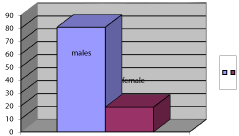
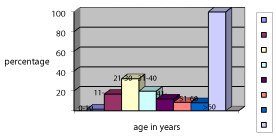
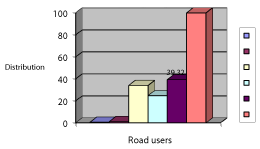
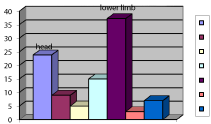
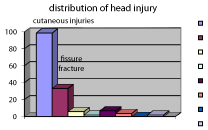
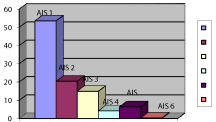

 Save to Mendeley
Save to Mendeley
